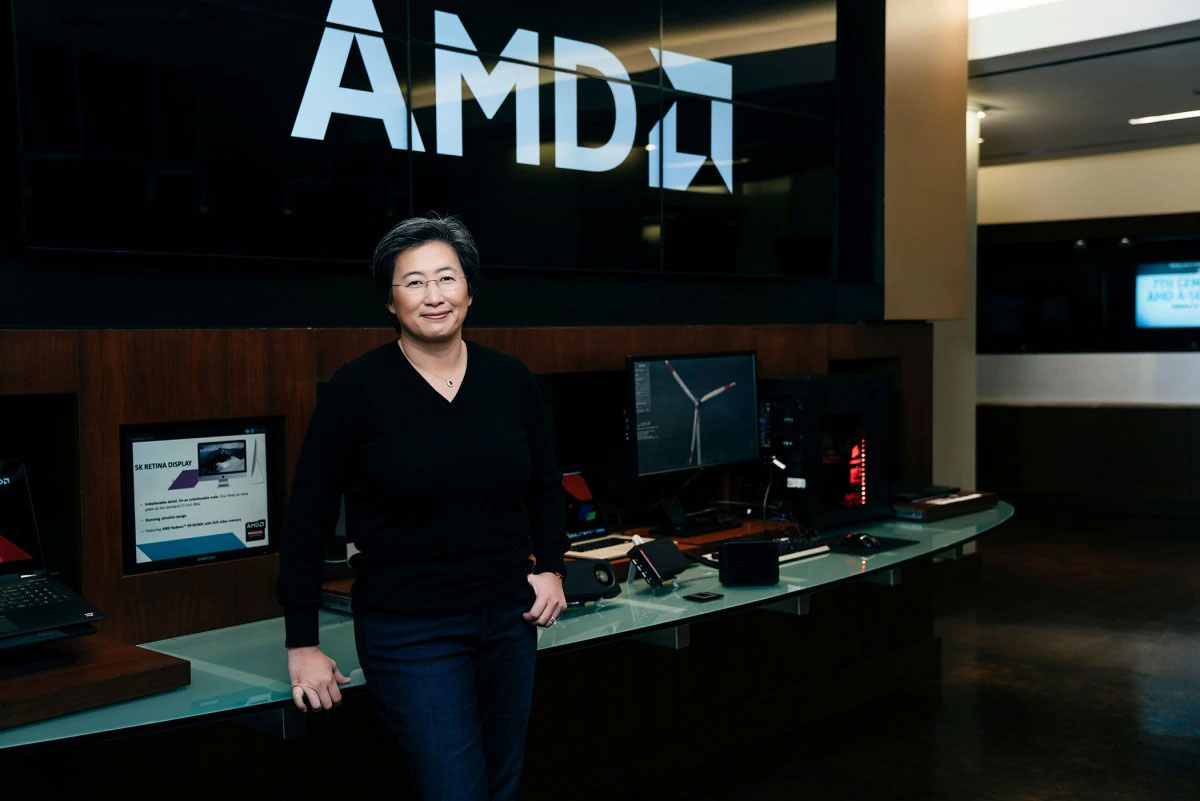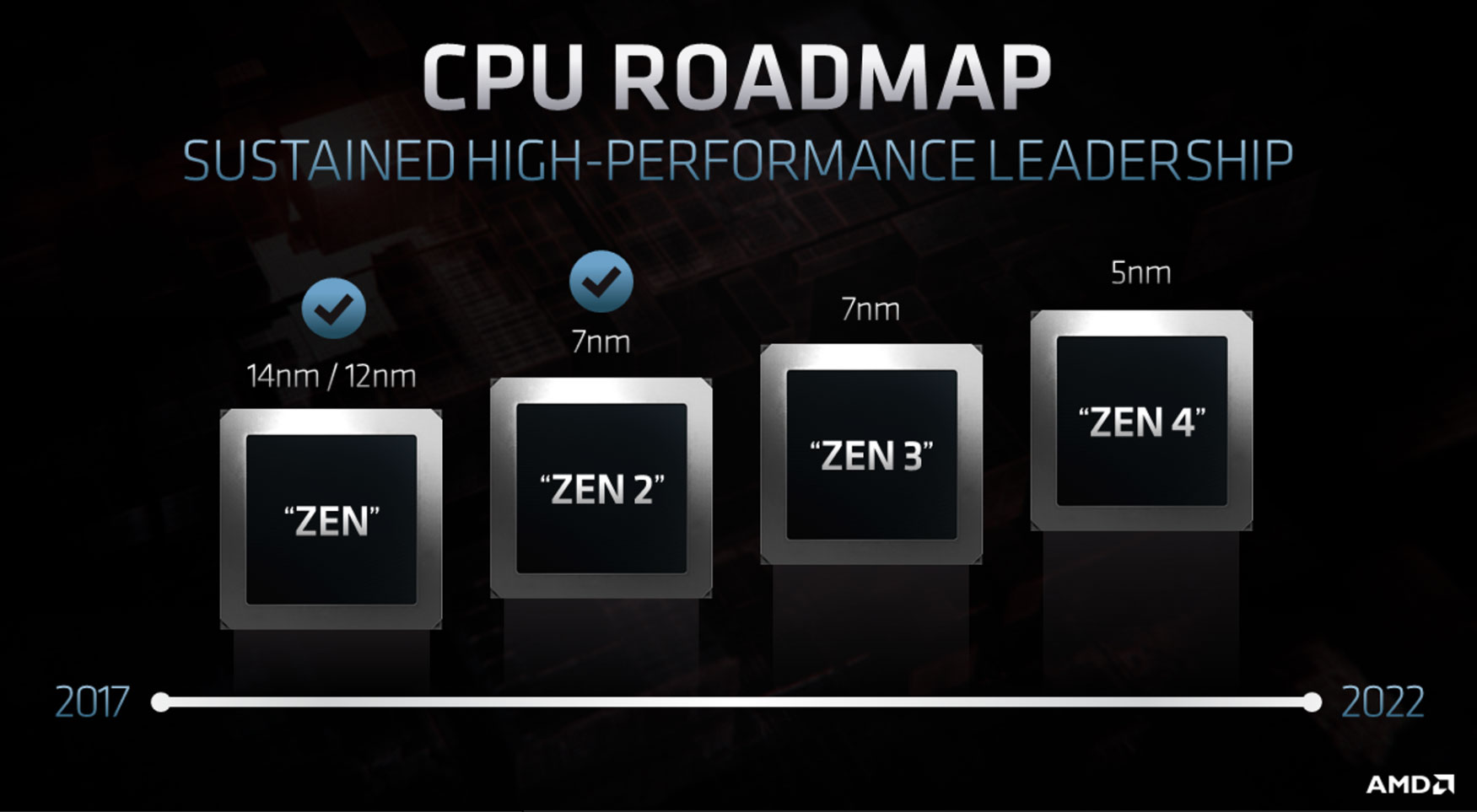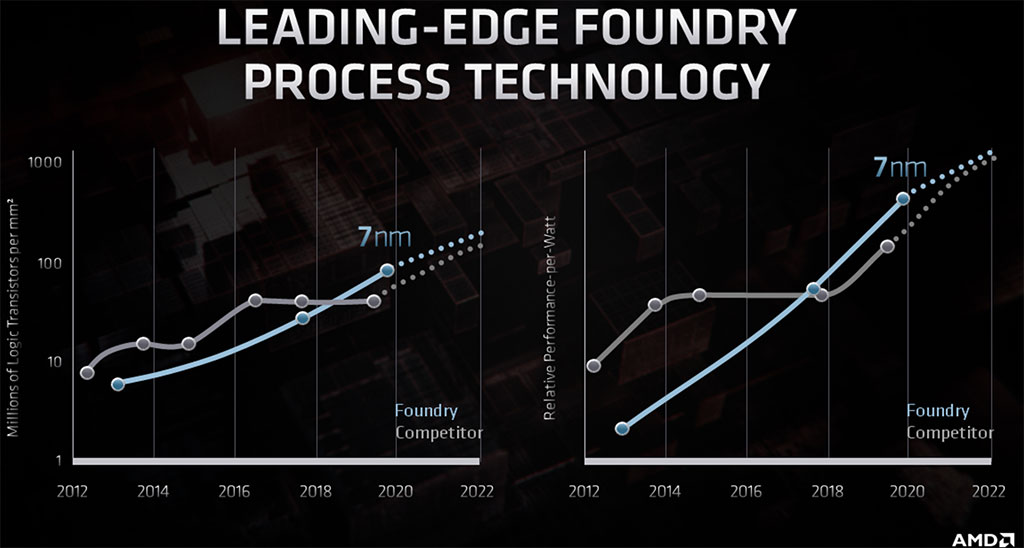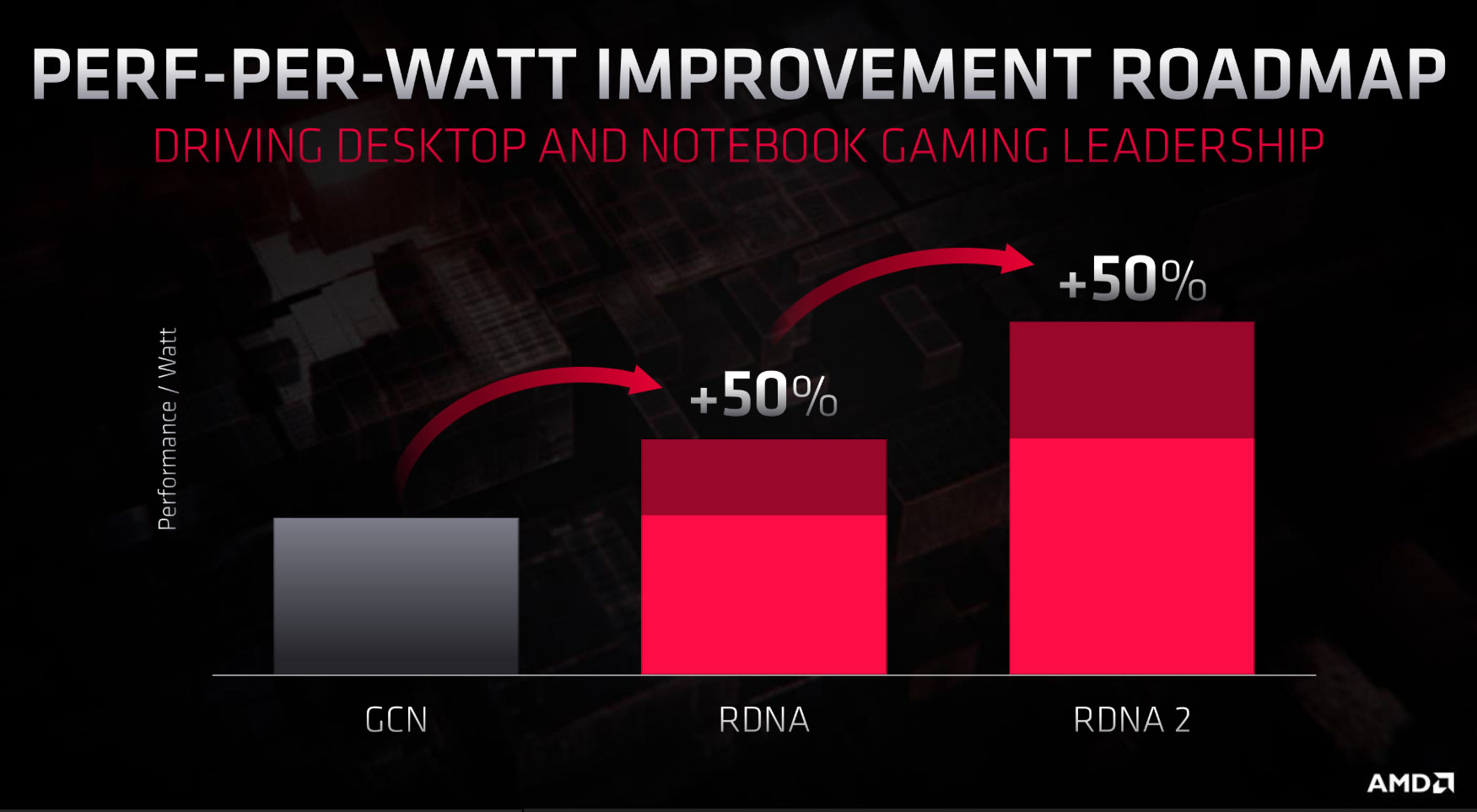AMD's CPU and GPU roadmap for 2020 and beyond is full of big upgrades
AMD appears to be in good shape going forward with Zen 3 and RDNA 2 on the horizon.

One of the biggest stories in PC hardware over the past few years has been AMD's surge in mindshare and popularity. No easy task—for years, AMD's CPU and graphics efforts were mostly met with disappointment. But with the introduction of its Zen CPU architecture in 2017 and, to perhaps a lesser extent (for now), its Navi GPU architecture, there is genuine excitement and optimism for its products, which hadn't existed since the Athlon 64 days.
Looking ahead, AMD seems poised to keep the momentum going, both with its upcoming Zen 3 CPU architecture and RDNA 2, which will underpin its next-gen "Navi 2X" GPUs (otherwise known as "Big Navi" in media circles). However, while the road leads to Zen 3 and RDNA 2, it doesn't stop there.
During its Financial Analyst Day presentation this week, AMD shared some updates about its roadmap and what to expect in terms of features and performance.
Zen 3 and Zen 4 are both on track

Starting on the CPU side, AMD reiterated that its future versions of Zen are on track. Zen 3 will come out later this year, while Zen 4 is slated to arrive in 2021. That said, there are interesting (and subtle) details to note in the slide above.
Here's what we recommend if you're building a new PC:
- The best graphics cards
- The best CPUs for gaming
- 2020 gaming PC build guide
The initial version of Zen was released in the first quarter of 2017 and comprised AMD's first generation Ryzen 1000 series processors, and was built on a 14-nanometer manufacturing process. Then came Zen+ in April 2018, which shifted to a 12nm node and made up the second generation Ryzen 2000 series. We're now on Zen 2 (7nm), the architecture behind AMD's third-generation Ryzen 3000 series. Remember, the smaller the manufacturing process, more power efficient the transistors, and the more you can fit onto a chip.
Note that I'm only referring to desktop CPUs here—things get needlessly confusing if throwing mobile APUs into the mix because they don't follow the same model scheme. What's interesting, though, is AMD's shift away from the "+" designation. AMD now clumps its Zen+ line into the initial Zen family, even though they represent two generations of products.
Somewhat related, notice that Zen 3 is no longer labeled as 7nm+ as it had been in previously shared roadmap slides. What gives? This has to do with how its manufacturing partner TSMC labels its process nodes.
Keep up to date with the most important stories and the best deals, as picked by the PC Gamer team.
As highlighted by our friends at Anandtech, there are three:
- N7—initial version using 'DUV' only tools (no EUV)
- N7P—second-gen version of N7, also DUV only
- N7+—EUV version of N7
DUV (deep ultraviolet) and EUV (extreme ultraviolet) refer to the type of lithography used, and specifically the wavelength range. Samsung actually has a really good explainer on lithography techniques, but in short, EUV paves the way for more advanced processors.
As it pertains to AMD's roadmap, Zen 3 is seemingly not being built with TSMC's N7+ node. So to avoid confusion, AMD dropped "7nm+" from its current slides and simply says 7nm (it's not clear if Zen 3 will be based on N7 or N7P).
Regardless, AMD is on schedule. During the presentation, AMD stated its goal is to always have a competitive product in the wild, another one in development, and yet another one in the design phase. Zen 4 falls into the latter category and will see a shift to 5nm.

One of the things I found interesting about AMD's presentation was its candid remarks on process technology. The company's CTO, Mark Papermaster, said AMD didn't anticipate being a leader in process technology when it shifted to 7nm. He's referring to being ahead of Intel, which is struggling to get proper yields from 10nm (we're still waiting on 10nm Intel desktop CPUs).
Comparing nodes from two different manufacturers (TSMC and Intel) is not as simple as looking at the number. However, it's plain that AMD is ahead of Intel right now, as it pertains to manufacturing.
See in the slide above how the lines converge in 2022? In no uncertain terms, Papermaster said AMD assumes Intel will "come back at some point" and be ahead again, just not right away.
"Once you have a gap and some of the issues that may cause a delay in a new technology, it's gonna take some time," Papermaster said.
Meanwhile, AMD is confident it can maintain its current trajectory, which is good news for consumers. If that happens, even when Intel jumps back ahead (with 7nm or 5nm), AMD is essentially saying it won't be like the past, when its products were simply less capable and less desirable than Intel's.
Next-generation Radeon cards to bring a 50 percent performance-per-watt improvement

Moving on, AMD believes it is on solid footing with its RDNA graphics architecture as well. RDNA is what powers AMD's current generation Navi GPUs in the Radeon RX 5000 series. According to AMD, it brought a 50 percent uplift in performance per watt compared to its previous generation GCN architecture.
RDNA 2 is now right around the corner. It will power the next-gen version of Navi. We already know this will be featured in Sony's PlayStation 5 and Microsoft's Xbox Series X consoles, and Microsoft recently bragged that the GPU in its system will deliver 12 TFLOPS of graphics performance.
That's more TFLOPs than what Nvidia's GeForce RTX 2080 Super offers, though we can't discern much about performance from that alone—the Radeon RX Vega 64 is capable of 12.66 TFLOPs, but is slower than a 2080 Super.
For the PC, AMD has already said it plans to release RDNA 2 products this year. According to yesterday's presentation, RDNA 2 will again deliver a 50 percent performance per watt improvement. AMD is also already looking ahead to RDNA 3, but isn't offering up too many details at the moment (it will arrive by 2022).
AMD is not adopting the Big Navi nomenclature that is commonly used in headlines, and is instead rolling with "Navi 2X" for its RDNA 2 GPUs. And the company's message here is clear—it has every intention of competing in the extreme high-end by releasing "top-of-stack GPUs with uncompromising 4K performance."

AMD is setting up big expectations for Navi 2X (and after that, Navi 3X). In addition to promising "extreme performance with efficient power," Navi 2X GPUs will bring hardware-level support for real-time ray tracing, and variable rate shading.
If this all comes together, AMD will bring parity between its GPUs and Nvidia's lineup, both in performance and features. Whether or not that actually happens remains to be seen, and of course Nvidia isn't standing pat—its Ampere lineup is rumored to bring big performance gains as well.
What does this all mean for PC gaming? Well, if AMD can execute on both fronts (CPUs and GPUs), gamers will have a wealth of options to choose from, not just in the immediate future but also beyond. The bigger question is graphics. We've already seen AMD assert itself back into the CPU space, especially with its latest-generation Zen 2 processors. The same has only been partly true in graphics, though. Nvidia owns the top-end of the market. We'll have to wait a little bit longer to see if that changes.
Paul has been playing PC games and raking his knuckles on computer hardware since the Commodore 64. He does not have any tattoos, but thinks it would be cool to get one that reads LOAD"*",8,1. In his off time, he rides motorcycles and wrestles alligators (only one of those is true).


